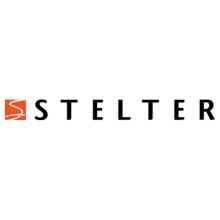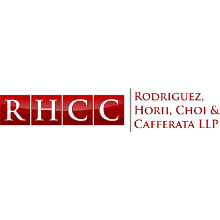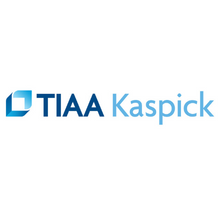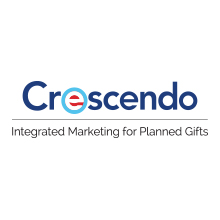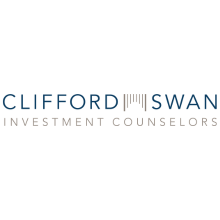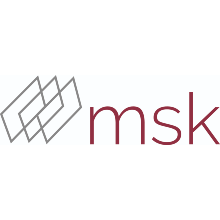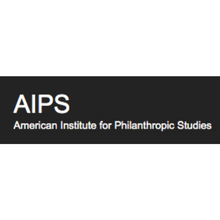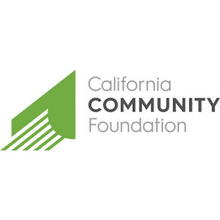|

Welcome to the LACGP Newsletter. This e-newsletter is sent out on a monthly basis. The newsletter provides links to this page. Please see below for the items that appeared in the December 2021 issue.
Legislative Update
By Cynthia Hizami, Esq., Legislative Chair
It is hard to believe 2021 is almost at an end and we will soon be ringing in the New Year. Despite the holiday season, the last couple of months have brought about some legislative changes we at LACGP thought would be of interest.
TEMPORARY FUNDING BILL
The Senate passed a temporary funding bill, preventing a government shutdown through February 18, 2022. Additionally, Congress voted to raise the nation’s debt limit officially staving off default and economic issues until after the 2022 midterm elections.
INFRASTRUCTURE PLAN
On November 21 of this year, President Biden signed into law the infrastructure plan, which will provide an investment in a wide variety of areas including roads, rail, water, broadband access, utilities, etc. The law does not include changes to the tax code applicable to individuals.
BUILD BACK BETTER PLAN
The most recent Build Back Better House version passed on November 19, 2021, and is now pending in the Senate. The Democrats were hoping it would pass by Christmas, but as get closer to the end of the year, it seems we are looking towards 2022. Initially, a $3+ trillion-dollar plan, the BBB Act has been scaled back and the proposed tax changes dialed down with some exceptions.
Provisions Removed
- The provisions regarding reduction of the federal estate and gift tax exemption (which will be $12.06 million for individuals and $24.12 million for married couples in 2022, but will drop down to $5 million and $10 million, respectively on January 1, 2026).
- Increase in capital gains and top marginal income tax rates.
- Provisions regarding the step up in basis upon inheritance of assets.
- Provisions disallowing some income and tax benefits for grantor trusts such as GRATS and CLATS.
Provisions Remaining and Currently Before the Senate
- The bill would impose a 15% minimum tax on the profits of corporations that report over $1 billion in profits.
- 1% surcharge on corporate stock buybacks.
- The bill would disallow the 75% and 100% exclusion of gain from the sale of stock if the taxpayer's AGI is over $400,000 or if the taxpayer is a trust or estate.
- There would be a surcharge tax on high-income individuals, trusts, and estates. The surcharge would be 5% of the amount of the taxpayer’s AGI which exceeds $10 million ($200,000 for an estate or trust), and a 3% surcharge tax on the amount of the taxpayer’s AGI which exceeds $25 million.
- The bill would increase the SALT deduction cap from $10,000 to $80,000 through 2031.
We will all have to wait and see what the Senate decides regarding the Build Back Better bill.
IRA AND DAF
Finally, Congress has not moved forward on the pending legislation which would expand tax benefits under the IRA Charitable Rollover Law. Nor has there been action taken on the proposed changes to donor-advised funds.
2022 looks to be a very interesting year. Be on the lookout as the National Association of Charitable Gift Planners continues its Legislative Updates in 2022 at 10 AM PST as follows: February 17, April 21, June 16, August 18, October 20, and December 16. Registration can soon be found here.
We at LACGP appreciate you and wish you and yours a very happy holiday season and New Year!
Kellogg Voorhis Legacy Society
By Vince Fraumeni, Director, Planned Giving, Cal Poly Pomona
The history of Cal Poly Pomona dates to 1938 when Charles B. Voorhis donated his 157-acre Oak Knoll Ranch to serve as the southern branch of Cal Poly. In 1949 W.K. Kellogg contributed his 813-acre hilltop Arabian horse ranch to expand what has become the campus of the California State Polytechnic University, Pomona. Both men had a vision for a future in which young people would be educated and trained to become leaders in a host of career fields.
We uniquely honor the legacy of the men who gave birth to this exceptional university. They were men of vision, commitment, and determination. Likewise, the Kellogg Voorhis Legacy Society honors today’s far-sighted individuals, dedicated to ensuring that a quality education and preparation for career leadership continues well into the future.
Membership
At the time of this writing, 106 members of the Kellogg Voorhis Legacy Society are recognized for the steps they have taken to include a gift to Cal Poly Pomona through their estate plan. To become a member, we recognize those individuals who completed any of the following:
- Bequest in a will or trust
- Charitable Gift Annuity
- Charitable Remainder Trust
- Charitable Lead Trust
- Life Insurance Policy designation
- Designated beneficiary of an IRA or other retirement fund
- Created a Life Estate
Stewardship
The university acknowledges this group as an essential partner in shaping its future and stewards
members of the Kellogg Voorhis Legacy Society with the following:
- On and off campus and virtual special events
- Society membership lapel pin
- “Thank-View” video birthday greetings from students
- Happy New Year greeting card
- Special letter from the President of the University
- Name included in publications and planned giving website
- Personal contacts by phone, email, zoom, and face to face
During the first year of Covid, we made a special effort to contact legacy members to simply check in about their wellbeing. Initially, contact was made by phone. Surprisingly, many of our senior-most donors were prepared for Zoom type meetings. Last year over 60 seniors attended our first Virtual Estate Planning Seminar. Those meetings and phone conversations helped build relationships and lead to a common serendipity among this group-increased annual giving for student support needs. This coming year we are planning a special on campus event, a luncheon at our horse stables and a tour of our new Rose Float Lab. Regular stewardship continues throughout the year from related college Directors of Development.
Many of our legacy society member come from an already existing volunteer base. These include serving on college advisory boards, the retired faculty and staff association, and a well-established Rose Float Alumni Association.
Incorporating a legacy society can be an important part of a planned giving marketing effort. When you promote membership in a legacy society you have an opportunity to promote a myriad of planned gifts. Keep in mind that the majority of planned gifts will be the simple bequest. Donors don’t have to give up any assets while they are alive to make a bequest.
It’s not enough to have a society in name only. Their needs to be the simplest form of recognition, welcome new members in a newsletter, post names on a website, personal phone calls. Recognition increases donor self-worth and value for giving.
I recently told a donor, “It’s more fun to thank you for your generosity while you’re alive!” He agreed.
Creating Champions with Three Simple Words
By LACGP Board
Obtaining larger donations will likely require more than direct marketing appeals. While direct marketing has an important place in your overall fundraising efforts, it is one of many steps within a more comprehensive ‘moves management strategy/marketing funnel’. Direct marketing is part of an overarching stewardship process. Your direct marketing efforts will lead new donors your way and you will likely increase your pool of outright gifts and even bequest commitments. However, the larger bequest gifts, and in many cases fulfilled bequests, grow when sound stewardship measures are employed. Consistent stewardship could be the difference between a $5,000 testamentary gift and a $500,000 gift from the same donor. What is needed to encourage larger gifts?
How do you move donors who contribute smaller gifts to becoming fully invested champions?
First, it’s important for fundraisers to be familiar with the giving options that best apply to the financial circumstances of their prospective donors. With nearly 99% of American wealth held in non-cash assets, such as real estate, retirement plans, business interests, securities, insurance, etc., the fundraisers that help donors better understand how to give directly from those assets will benefit not only the donors but the organizations that promote these ways of giving.
Second, I would like to focus on the value of building “KLT” – Know, Like, and Trust. These processes will move donors to become more enthusiastic about your work.
You want donors to care about your cause. Furthermore, you want donors to know what you are doing as an organization to overcome the problems related to your cause. You can bring to light your personal investment in the work you have passionately chosen to do to encourage your donors. It will help your donors better understand how and why you personally are the biggest fan of the organization you serve.
As a fundraiser, you model the actions you desire from others, and seeing you in the trenches will inspire others to join in. This will connect your donors to you, your mission, and your organization that serves that mission. Future champions will emerge when they see this sort of leadership from you and your team. As they slowly emerge over time, you will see them become your larger, more faithful donors… and possible catalysts for your largest future donations. They are your messengers, your mediators, your eyes and ears for others who wish to get involved.
What do your donors need from you to become future champions? It requires a deliberate strategy for developing “KLT” among your donors: Know, Like, and Trust.
While easy enough to understand, fundraisers might already assume that their donors value them. That might be true… to a point. However, when we are asking for the largest gifts many of our donors will ever consider giving, we might be underestimating how much attention they will need along the way. So, if developing “KLT” is the goal, stewardship is the way we get there.
K: Know
Your donors need to experience numerous touch points with you throughout the year. A calendared stewardship approach to individual donors may help. Even though some of these donors may not be overly responsive or enthusiastic about hearing from you at first, they will begin to learn more about you, your heart, and your work from your outreach efforts. Efforts such as phone calls, personal emails, handwritten letters, marketing connections, and social media interactions are all important here. Over time, they will begin to see the steady work that you do. More people will become familiar with your name and your good work. They will begin to like what they see. Helping donors “Know” you will require making a planned effort to keep you and your work in front of them.
When I first met with George over a video chat, I was with a friend who had been actively supporting George’s efforts as the executive director over a small school in Uganda. George seemed to be a good guy, but I had no history with him. I did not know him, so I found myself somewhat reluctant to get too involved on a financial level. I did not know his capacity, his heart or his integrity, that he would wisely use the funds given to his organization. So, I watched and waited. When the opportunity came to travel to Uganda to further investigate, I learned a lot about the culture, the economic pressures, the corruption, the crime, and the modest circumstances that surrounded George and his personal life. George leads a school of 250 students who would otherwise be uneducated had it not been for his own personal sacrifice, dedication, and perseverance.
Having spent nearly two weeks with George and the 21 people who lived in his small home, I learned quite a bit about the man in front of me. While we had a bit of a language barrier, I discovered how this man sought to honor these children, their parents, and us as visitors. I came to value his heart for leading his staff, as they have the enormous task of educating these 250 kids.
Today, my interest has grown to a level where I help fundraise for George along with others here stateside. You might say I have become a stateside champion for George’s efforts as a school director. I have come to know George, not only because of our time spent together but because of the ongoing efforts he makes to keep in touch with me.
L: Like
Your donors will determine if they like you based on how you approach and interact with them. If your donors feel like you are only trying to serve your own interests, many will simply avoid you the next time around. Whereas, if your approach includes care for them and what they care about, many will deeply appreciate your thoughtfulness and warm up to you.
In a prior role, I was responsible for creating a “first impressions” team, where we found outgoing and gregarious people who would do a good job of encouraging those who came onto our campus. While some visitors would engage with our team members right off the bat, others required time and repetition before they would open up to us.
Beginning with parking, we had volunteers serve as greeters to those driving up in their cars, kindly directing and encouraging those pulling into our campus. From their cars, we had volunteers who were gifted at making small talk, helping visitors become comfortable during their time on our grounds. Eventually, we had many who warmed up to us and would look forward to ongoing connectivity each week. For me, a natural next step was meeting for coffee and getting to know them further, ultimately with the goal of helping people take a next step with our organization.
“Do they miss you when you are gone?” This is a great way to measure how you are doing after working your stewardship magic, though getting here may take some perseverance. If they miss you, that is a good clue they like you.
T: Trust
Your donors will trust you when they sense that you have their best interests at heart—that you will do right by them and not reach out only when it is profitable for you. Furthermore, your donors already believe in your cause and trust that your organization is solving the problems relating to your cause. Trust builds when donors see vision turning into reality; noticeable progress develops confidence.
One key way to create trust with your donors is to keep the “transformational wins” in front of them—wins about your programs, successful life-change stories, capital wins —in short, your progress as an organization. While many of these “wins” may seem small, collectively they create a larger mosaic of positive impact. They build trust.
Another way of creating trust with your donors is to assess their level of affinity towards you—how much they presently Know, Like and Trust you. Asking questions about their interests and ways they have personally been impacted by the work of your organization will allow donors to speak into their underlying motivations for giving. As they share, you will discover insights about their history with you, their belief in the work you are doing, how they feel about you, their concerns about any issues that need addressing, and their interest for future giving. Moreover, they will feel appreciated for the way you took time to listen and give attention to their thoughts and concerns.
Another way of creating trust with your donors is to help them accomplish their giving goals by offering optional ways to give that might be beneficial to them. Planned giving offers ways to help your donors save on taxes and create gifts that provide payment streams to your donor. If your donors better understand how the various planned gift models work, they will likely be more inclined to trust you with future giving considerations.
Getting your donors to Know, Like and Trust sounds simple enough, but developing “KLT” takes steady stewardship. With time, patience and consistency, your donors will begin to care at a whole new level, moving towards becoming your greatest champions.
|


